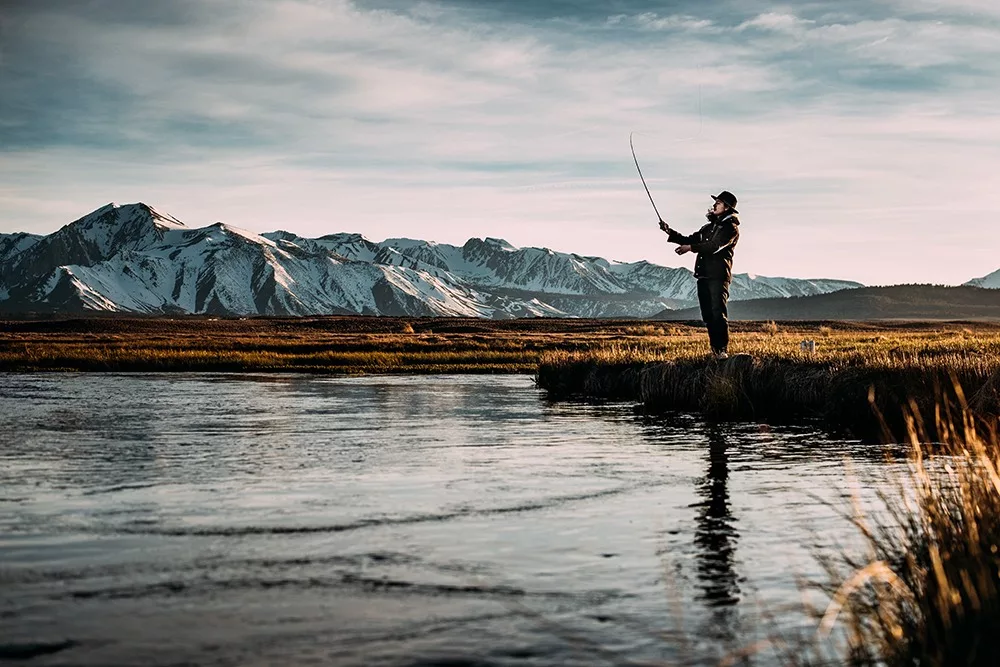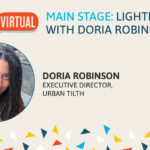How many of you are aware of the characteristics that make someone good at fly-fishing? Well, according to a variety of sources on the subject, the following holds true: patience, a willingness to learn, respect, adaptability, creativity, self-confidence, determination, and generosity.
Clemens Pietzner loves fly-fishing, here in the local waterways of Chester County or farther afield in the roaring waters of Colorado, Utah, or Montana. What does fly-fishing have to do with telling an “impact story” based right here in the Philadelphia region? Well, fly-fishing and impact philanthropy are part of what makes Pietzner who he is and why he is an impact icon in the area.
This story begins in 2002 in the western suburbs of Philadelphia. Pietzner and a small group of colleagues saw the need to create a conscious and sustainable world through engaged philanthropy and had the vision to align practice with purpose — at the individual level, in the community, and on a global scale. As Pietzner says, “fly-fishers have to align their skill with the flow of the river, the fish, the temperature, the insect life, and the ever-changing elements of nature, not unlike the conscious effort to harmonize oneself with one’s community, one’s locality, and the world.”
To put these concepts into practice, he created a nonprofit organization that combined the flexible, simple structure of a donor-advised fund and paired it with individuals’ deeply held values, creating one of the few organizations at the time, and even now, that provides a full impact philanthropic experience. Through the Triskeles Foundation, Pietzner and his colleagues went against the grain of standard practices at the time and offered a better, deeper, more aligned, and personally impactful way of combining investing and giving simultaneously. Pietzner is one of the original, determined impact pioneers in the region, in good company with his friends and colleagues: Judy Wicks, Laura Kind McKenna, Jay Coen Gilbert, Bart Houlahan, Elizabeth Killough, and now many others.
Founded in 2002 by Pietzner, the Triskeles Foundation is a way to put into practice three contemporary and ageless themes that serve as the inspirational and motivational content for the Foundation’s work. Triskeles develops a positive future for all, engages in and understands the dynamic between our human individuality and our community(ies), and finally, brings consciousness to the deeper aspects of money, its nature, flow, and how our intentions and motivations influence it.
Pietzner demonstrates determination, creativity, and self-confidence to come up with a nontraditional idea and put it into practice at a time when these concepts were foreign to many and unacceptable to many others. Let’s remember the time when all of this was taking place. Impact investing was a concept known by a few and practiced by even fewer. To set the context, here is a brief and incomplete timeline of activities and principles leading up to the 2002 launch of the double impact donor-advised fund approach practiced by the Triskeles Foundation:
- 1889: Philadelphia-based, Quaker Friends Fiduciary was founded and introduced a ‘no weapons, alcohol, tobacco’ investment policy
- 1990: Domini created the social index, now the MSCI KLD 400
- 1993: Divestment from south africa
- 2000: Calpers commits to 15-year goal of 100 percent integration of consideration of sustainability
- Fast forward to now: impact investing represents $22.8 trillion in assets or $1 in every $4 invested
In October 2015, Sean Greene, Entrepreneur in Residence at The Case Foundation, wrote in the preface to “A Short Guide To Impact Investing,” “A movement is afoot that represents a significant opportunity for businesses and markets to drive social value. By allocating assets toward products, services, and companies that generate positive social impact, the movement toward “impact investing” has the potential to create real value for investors and society.
Pietzner has done more than come up with a visionary model for an impact philanthropy approach that has given away millions of dollars to hundreds of organizations since its start. Through creating the Triskeles Foundation, he has also co-created a hub here in the Philadelphia region where like-minded individuals and ventures convene around ideas and actions. Individuals and organizations from the local area, as well as those from across the country and the globe, work together to invest, fund and create ways to have a positive impact while investing, gathering returns and channeling philanthropy in meaningful ways. Examples of this approach abound from local, and non-locally based individuals, families, the small company giving circles and nonprofits investing in best in class ESG/SRI mutual funds all the way to investments in socially responsible companies using the philanthropic dollars from their donor-advised funds. Here we see a willingness to learn, respect for other’s ideas and a place for constant adaptation to new and better practices.
An example of adaptation is Triskeles Foundation’s approach that celebrates a “philanthropy for all” in place of the older model where philanthropy was viewed as reserved for just those with extraordinary wealth. Through a donor-advised fund like Triskeles’, everyone is encouraged to participate in the process; families and young children can begin to learn about and participate in this exciting world of impact philanthropy. Minimums are low, and so barriers to entry are, as well. “This is not your parent’s philanthropy.” Triskeles is where the democratization of philanthropy is thriving, a message that resonates deeply with the Millennial generation.
Back to the connection between fly-fishing and leadership in impact philanthropy. It looks like we have come full circle. Remember some of those characteristics mentioned at the start of the article? According to the World Fishing Network, “there is a saying that 10 percent of anglers catch 90 percent of the fish … They seem to have an unnatural ability to find and catch fish and can outfish everyone else with ease. They are the masters of their craft. Some gain fame and celebrity while many are relatively unknown outside of their local waters.”
Let’s do our part to recognize and lift up the leaders like Pietzner and others cited in this article and beyond, who, while building socially responsible businesses and nonprofits, have demonstrated the characteristics of patience, a willingness to learn, respect, adaptability, creativity, and most notably, generosity. They make the region a better place for all of us. Without leaders like these in our community, our mission would be that much harder. Let’s pass along our gratitude and celebrate these leaders in our midst.





